I spy something fowl…
Connecting Field Book Observations to Scientific Illustrations
Field books are important primary source materials for biodiversity research. Their pages are the first to document the thoughts, observations, musings, and raw data generated or gathered by a scientist while in the field. They are the foundation upon which published natural history literature is based.
The Field Book Project (FBP) is working to improve access to field books in the Smithsonian’s collections. Digitized versions of these field books are made available in the Biodiversity Heritage Library (BHL). There are currently over 500 field books from FBP in BHL.
One of these field books was written by Joshua F. B (Fry Bullitt) Camblos (1916-2012). Camblos was a medical doctor with a keen interest in ornithology, and his field books contain details about the birds, eggs, and nests he spied in the woods of Virginia. His field book available in BHL documents these observations from February-April 1934, including descriptions of nests, condition and appearance of eggs, area vegetation, and bird behavior.
Since there is such a strong correlation between field books and published literature, we thought it would be fun to expand on the theme and connect Camblos’ observations to published illustrations of some of the species he described. We turned our spyglass towards the BHL collection to uncover some of our favorite published illustrations. We then present Camblos’ description of the bird, nest, and eggs he found in Virginia in 1934 together with an illustration and a bit of information about the publication it came from.
We hope you enjoy our fowl-focused game of “I Spy” within the published and unpublished literature on BHL. Explore more field books from The Field Book Project in BHL and learn more about the program in this past post.
House Wren (Troglodytes aedon)
Camblos writes:
“Feb. 25
Found a last years House Wren’s nest in a shed here at V.E.S. It had nine eggs in it. The nest was composed of pine twigs, leaves and lined with hair and feathers. All the eggs were rotten.”
 |
| Chapman, Frank M. Bird-life: a guide to the study of our common birds. 1900. http://biodiversitylibrary.org/page/7855990. |
Frank M. Chapman was an ornithologist, former Curator of Birds at the American Museum of Natural History, and founder of Bird-Lore, which became Audubon Magazine. In 1900 he proposed the idea of the Christmas Bird Count (CBC), an annual census of birds in the Western Hemisphere performed to this day and administered by the National Audubon Society. He also wrote many field guides, such as Bird-life: a guide to the study of our common birds, which was illustrated by wildlife artist Ernest Thompson Seton, who was also one of the founding pioneers of the Boy Scouts of America (BSA).
Horned Lark (called shore lark in Europe) (Eremophila alpestris)
Camblos writes:
“March 1 to 3 – Three horned larks have been here at school. They stay around a haystack to feed. They were marked as follows:
Back – Brown like meadowlark
Wings – Pointed brown
Tail – Black outer, brown inner
Head – Auriculars – Black streak down.
Crown – Brown
Forehead – ”
Throat – Black (“collar.”)
Flanks and Sides – Light chesnut
Length – About 9 inches.”
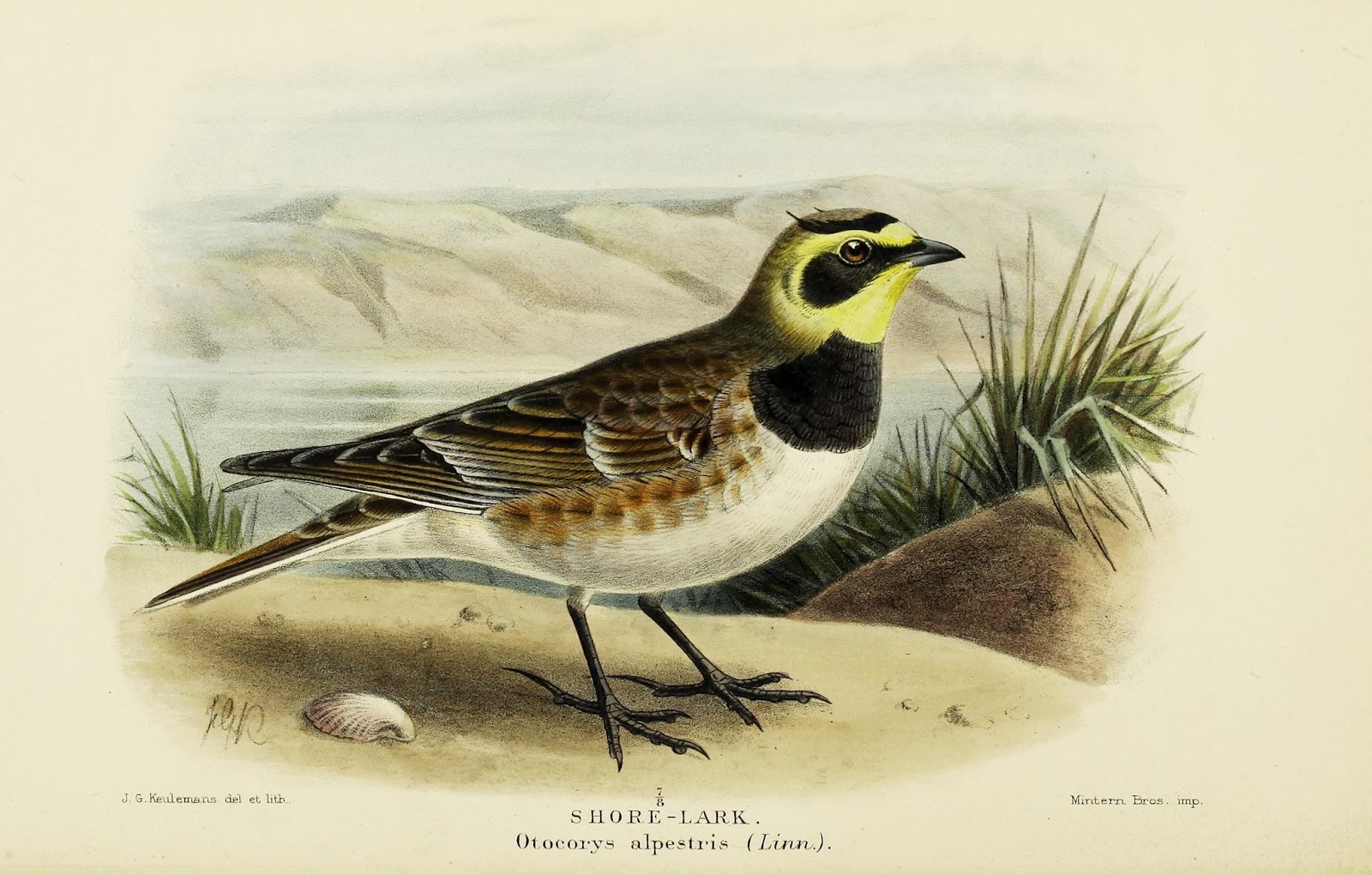 |
| Lord Lilford. Coloured figures of the birds of the British Islands. v. 4 (1885-97). http://biodiversitylibrary.org/page/43081338. |
Thomas Littleton Powys, 4th Baron Lilford, was a British aristocrat and ornithologist. He was one of the eight founders of the British Ornithologists’ Union in 1858 and its President from 1867 until his death. His book Coloured Figures of the Birds of the British Islands, was completed by Osbert Salvin (best known for co-authoring Biologia Centrali-Americana) after his death, and was illustrated by the famous bird artist Johannes Gerardus Keulemans.
Great Horned Owl (Bubo virginianus)
Camblos writes:
“March 31 (Saturday)
Found a Great Horned Owl’s nest in a chestnut-oak (6 ft. in diam. and about 60 ft. high) could not climb it. Will return tomorrow. Flushed both owls away from nest, so the eggs have probably hatched. (See part 2 for rest of information)”
True to his word, Camblos continues the narrative of the great horned owl the following day, with a story that involves chicks and skeletons. Check it out!
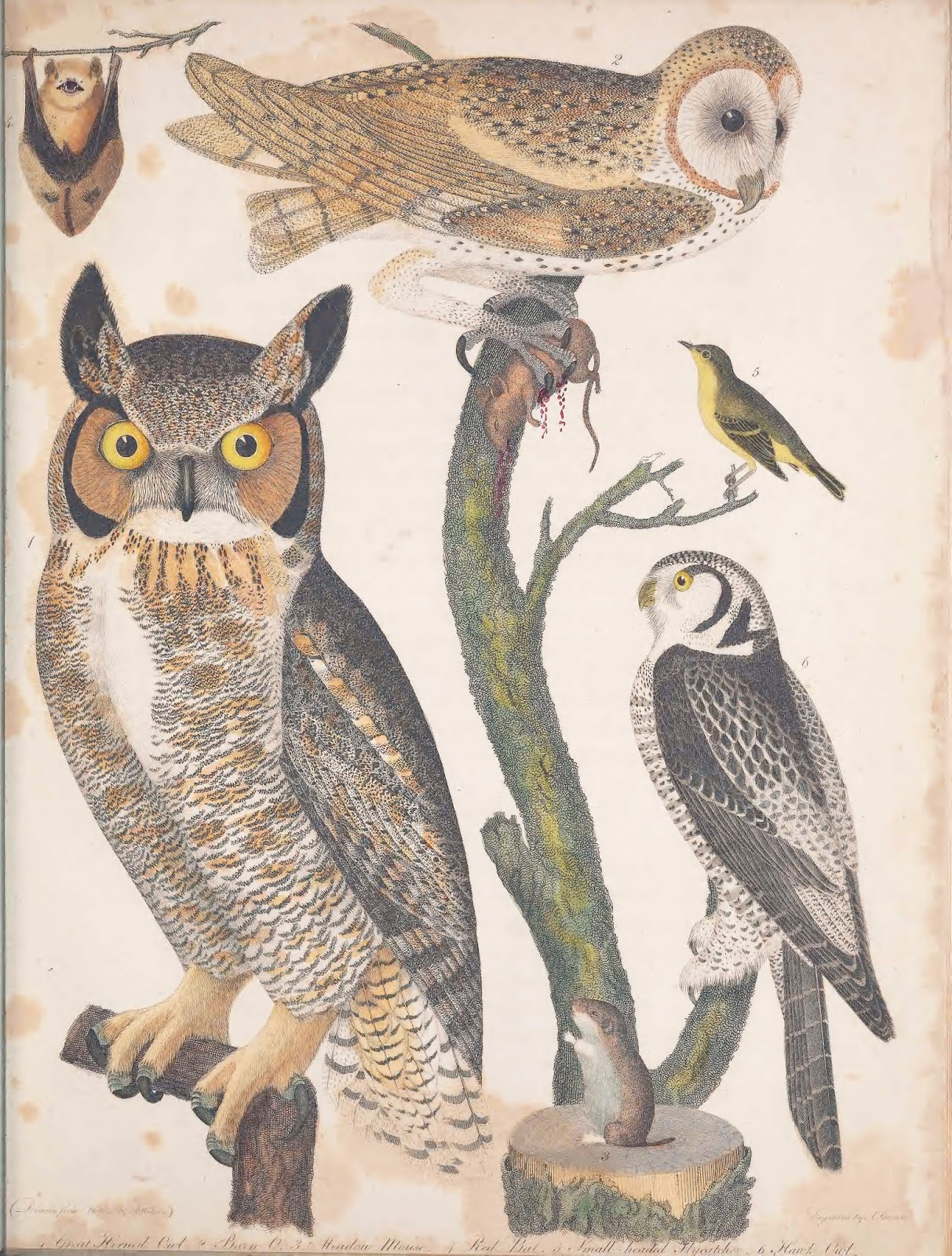 |
| Wilson, Alexander. American Ornithology. v. 6 (1812). http://biodiversitylibrary.org/page/46331204. |
Here we see the great horned owl (lower left) amongst some of his winged friends (ave and mammal alike!). This illustration hails from Alexander Wilson’s American Ornithology. Wilson, called the “Father of American Ornithology” by some, traveled over 10,000 miles across North America observing and collecting birds, which he chronicled and illustrated in American Ornithology. The publication included over 260 species, 48 of which were new to science, and was published in at least 10 editions over 70 years. Sadly, he died at the age of 47 from dysentery and exhaustion. Learn more about Wilson’s incredible travels, and his other love – poetry – in a past blog post.
Eastern Bluebird (Sialia sialis)
Camblos writes:
“April 15 – (Sunday)
Found 4 bluebird eggs in a telephone pole (200 yds. from V.E.S. chapel). The entrance was about 2″ in diameter and the inside hole was about 3 1/2″ deep and 2 1/2″ wide. The female was dead on the nest. All the eggs were fresh. Only a few dried grasses were used as nesting material.”
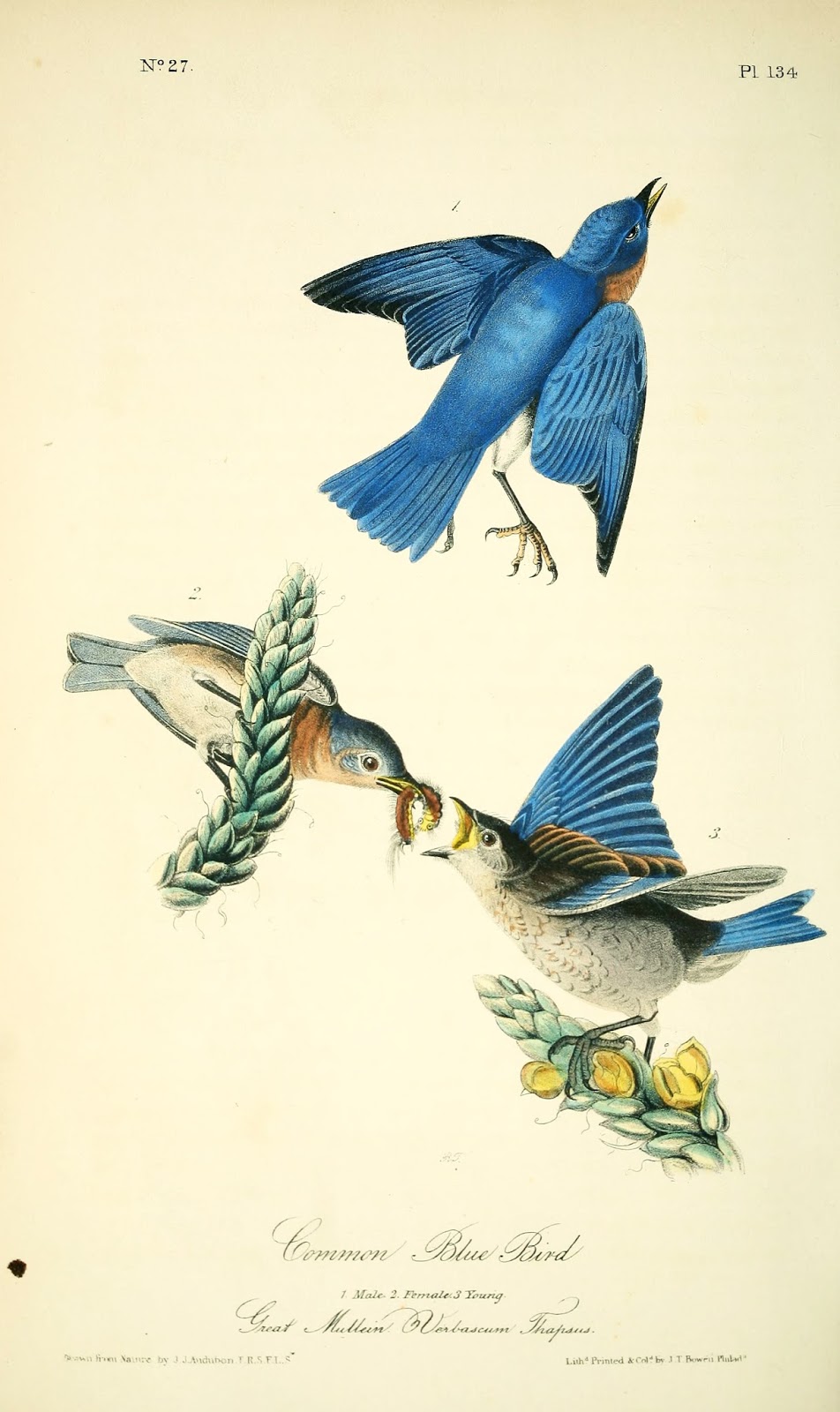 |
| Audubon, John James. Birds of America. v. 2 (1841). http://biodiversitylibrary.org/page/40383680. |
John James Audubon is pretty much a house-hold name. This French-American ornithologist, naturalist, and painter, was responsible for one of the most celebrated ornithological books ever published, Birds of America. After immigrating to the United States, Audubon undertook an expedition in 1820 up the Mississippi in an endeavor to paint all the birds of North America for eventual publication. This ambition later became Birds of America. The work represents more than 14 years of field observations and drawings by Audubon and contains 435 hand-colored, life-sized prints of 497 bird species and presents a total of more than 700 North American bird species. Learn more about the work and Audubon in a past blog post.
American Robin (Turdus migratorius)
Camblos writes:
“Apr. 23 – (Monday)
Took 3 fresh Robin eggs from a nest in a mulberry on the campus (20′). The nesting materials were coarse grass, string, mud, and a lining of fine grasses.”
 |
| Robin’s nest with eggs. Illustrations of the nests and eggs of birds of Ohio. 1886. http://biodiversitylibrary.org/page/34907621. |
In 1877, Genevieve Jones decided to create a series of plates for a publication depicting the nests and eggs of Ohio birds. She enlisted the help of close friend Eliza Schulze, and together the two women, amateur artists with no formal training, embarked on the venture. The first three plates, along with the accompanying text by Howard Jones, were sent to publication in 1879. Unfortunately, on August 17th, 1879, Genevieve Jones died of typhoid fever. Desiring to continue the work, Miss Schulze enlisted the help of Genevieve’s mother, Mrs. N. E. Jones. Eventually, Miss Schulze relinquished all of her interests in the title to Mrs. Jones. Determined to move forward, Mrs. Jones undertook the responsibility for all of the illustrations herself, eventually employing three additional artists, Miss Nellie D. Jacob, Miss Josephine Klippart, and Miss Kate Gephart. The final work, entitled Illustrations of the nests and eggs of birds of Ohio, consists of two volumes and 68 plates. Learn more about the work in this past post.


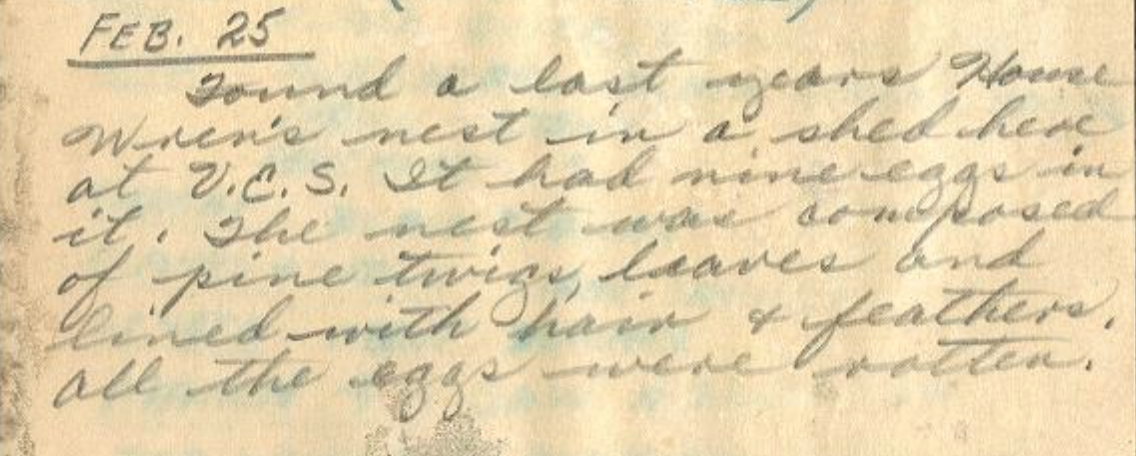

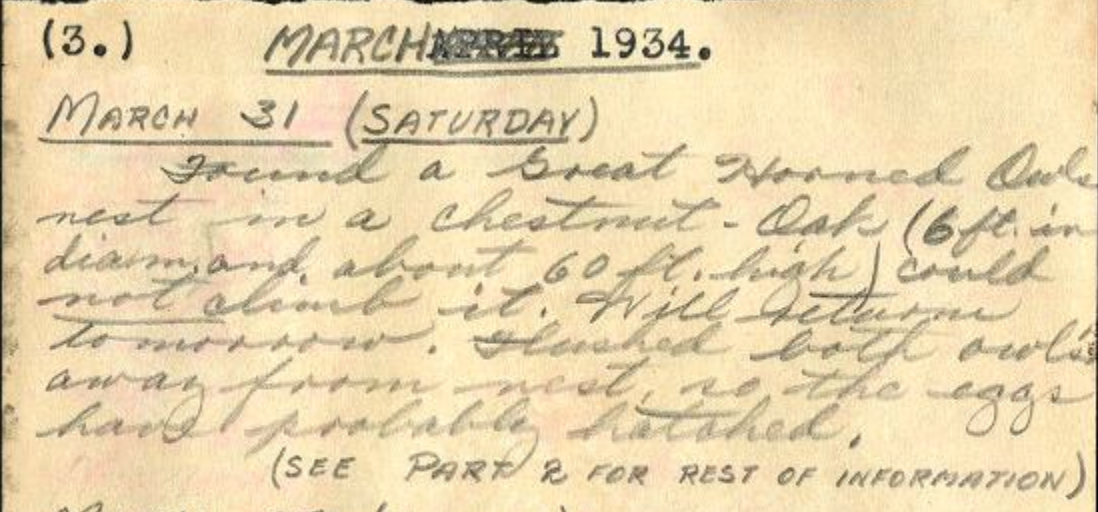





Leave a Comment